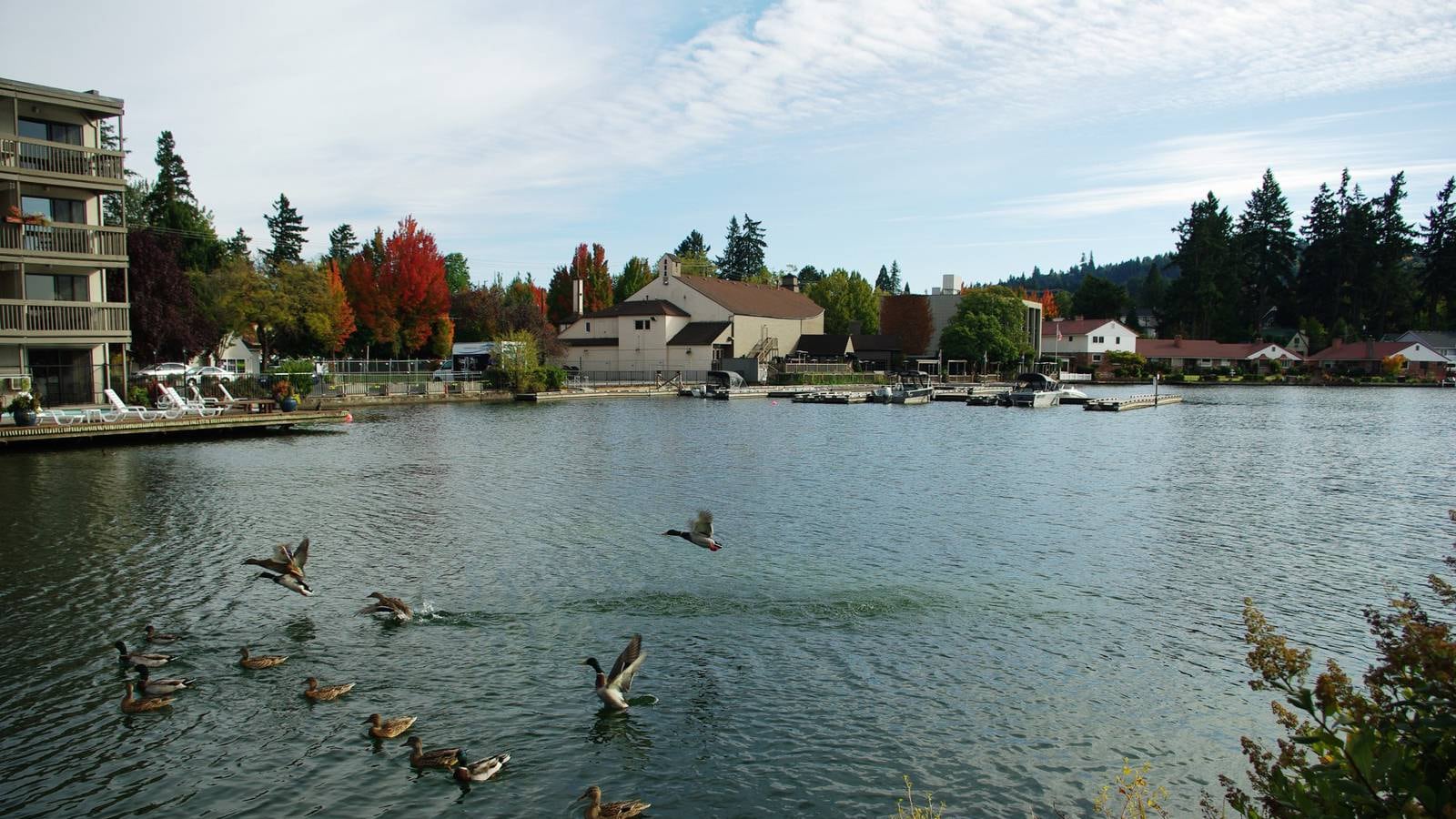Clackamas County Circuit Judge Ann Lininger handed down a ruling in a long-running dispute over recreational access to the waters of Oswego Lake that could upend the status quo.
Currently, members of the public are prohibited from swimming, boating or otherwise using the lake, including accessing the lake’s waters from three public city of Lake Oswego parks that border the lake.
But in a 15-page decision issued April 19 and previously reported by KGW-TV, Lininger found mostly in favor of the plaintiffs, Mark Kramer and Todd Prager, who originally filed suit seeking public access to the lake in October 2012.
The case went up to the Oregon Supreme Court, which sent it back to the trial court level to establish whether the lake is “title-navigable”—which means whether the lake bottom, like the bottom of other navigable waterways, belongs to the state. The Supreme Court also asked the lower court to determine whether the “public trust doctrine” applies—i.e., whether the public should have access to a lake that belongs to the state.
The city of Lake Oswego and the Lake Oswego Corporation, which manages the lake and is funded by residents with deeded access to the lake, opposed public access. The state of Oregon was also a party to the case. Its position was that the state owns the lake bottom of the original body of water, which was called Sucker Lake (after the fish found in it) but not the additional lake bottom created by later damming. That expansion added 155 acres to the original 235-acre Sucker Lake, but the state agreed with Lake Oswego and the Lake Oswego Corp. that the public should not be allowed access.
In a weeklong trial, Lininger heard testimony from historians and scientists who traced the long history of the transportation, industrial and commercial use of the lake. Those experts convinced Lininger that history of use make the lake “title-navigable.” She further decided that although the expanded lake bottom did not belong to the state—only the bottom of the smaller Sucker Lake does—that it’s impossible to segregate the water within Lake Oswego between public and private ownership.
“After statehood, private parties artificially raised the lake level for private benefit,” Lininger wrote. “This has created a barrier between the city’s public waterfront parks and Oswego Lake’s predominantly title-navigable waters. Lake Corporation shareholders routinely use this waters for boating, paddling, swimming, and other recreation (public trust uses), even as the public is denied access.”
Lininger continued in her conclusion, “Oswego Lake’s partial title-navigability, the public trust status of its waters, and the specific circumstances here create a public right of access to the lake from the city’s waterfront parks.”
But that is not the final word on the matter. In 2012, the city of Lake Oswego passed a resolution prohibiting any person from entering the waters of the lake from any city park “by any means or method.”
The trial will now enter a second phase, in which that court will determine whether that prohibition “unreasonably interferes with the people’s right of access.”
That trial is set for July 19.
